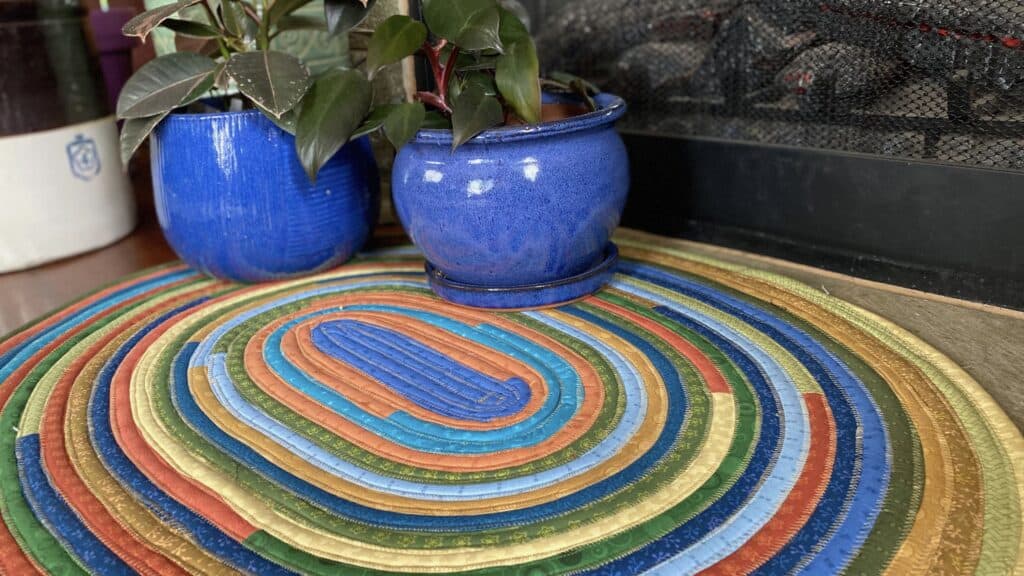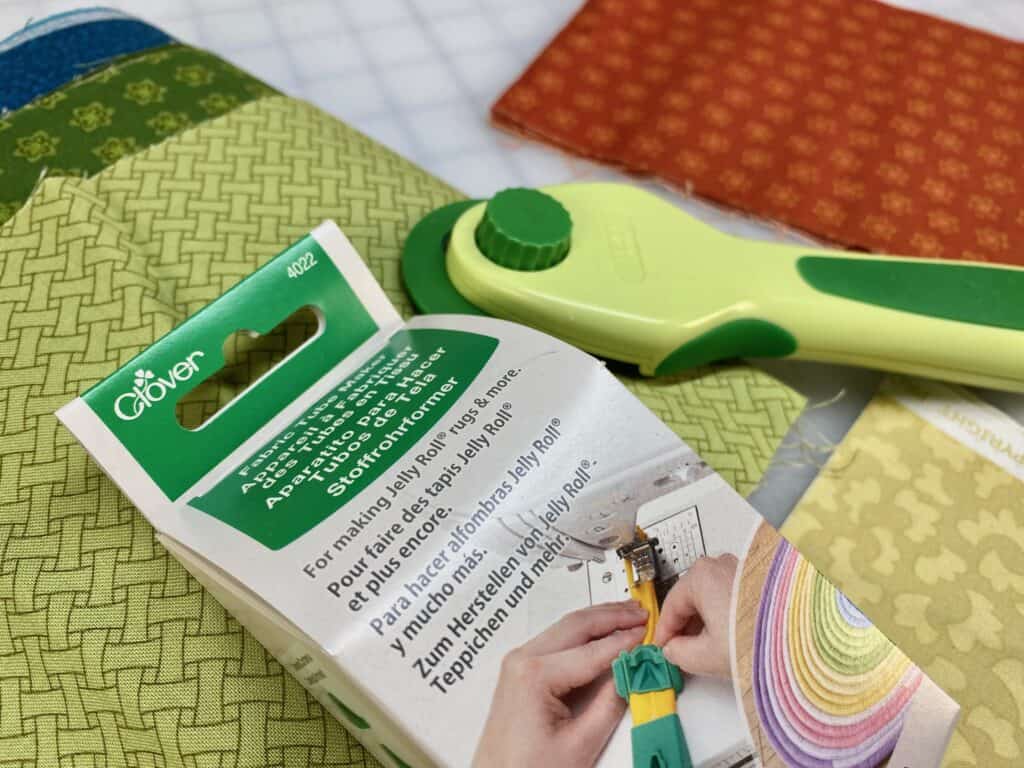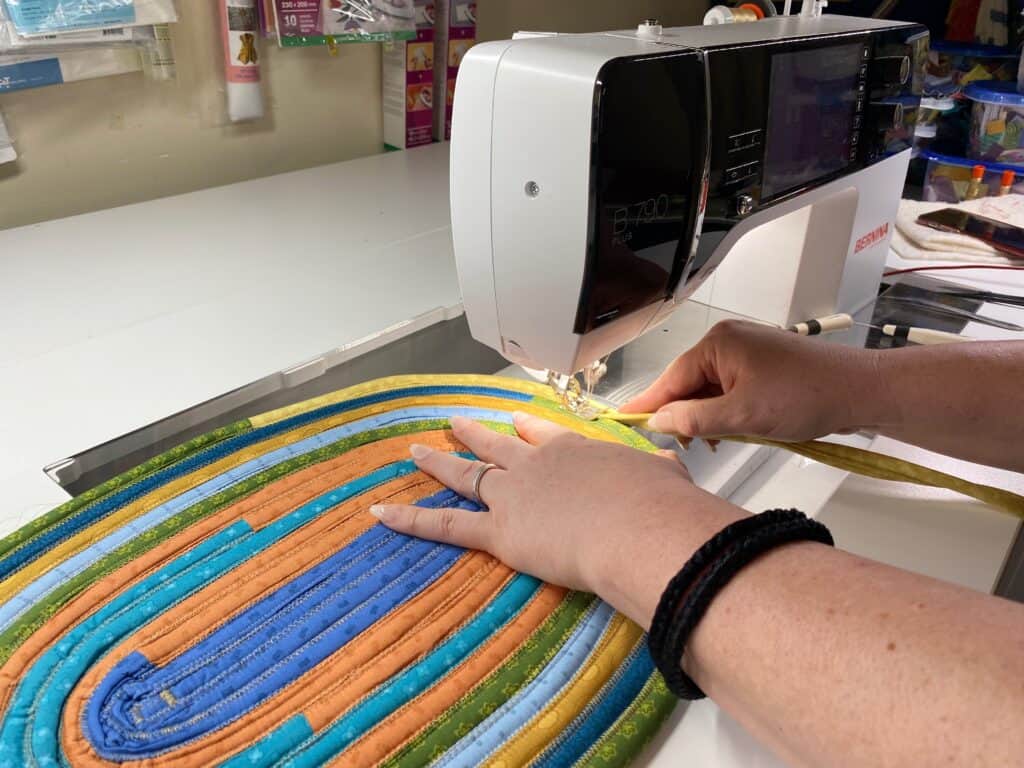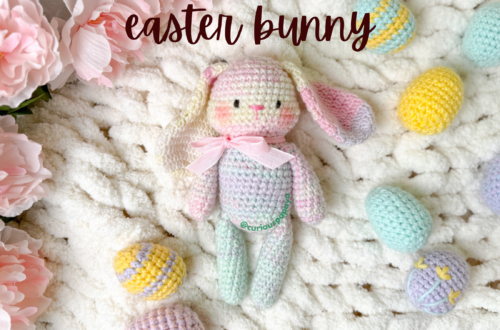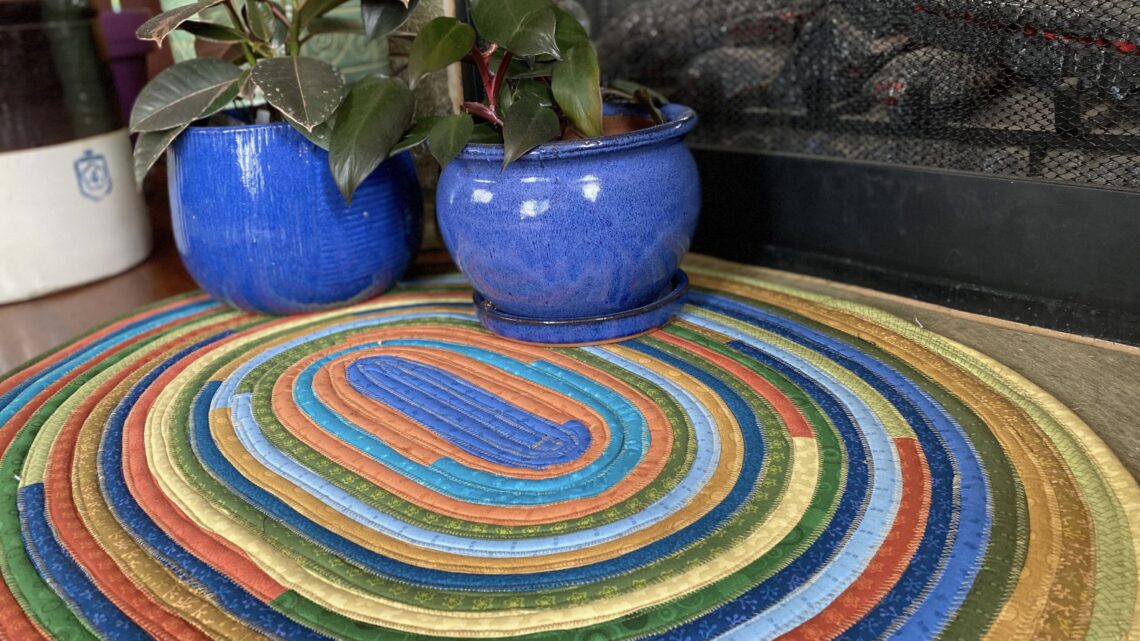
How We Use It: Fabric Tube Maker!
Hey all, it’s Shannon and Jason!
We love a good sale. Shocking, right? Seriously, the only thing we like more than a good sale is a good sale at the fabric store. It only takes minutes to fill up a cart with colors and textures and patterns…oh my. Next time you’re sauntering up to the checkout stand with a few quilts worth of fabric on bolts, take a gander behind the counter and you might catch a glance at a pre-cut jelly roll. Yes! Clover has done the hard work for you and cut coordinating fabric into 2.5” strips… They’re all ready to use! If you’re lucky, like us, those fab rolls might be on sale too… In that case, grab a roll or two (or three…) They come in handy! Especially if you happen to have Clover’s new Fabric Tube Maker. When we were first sent the tool from Clover, we looked it over and wondered if this was a tool that would really work as advertised. They said it made fabric tubes easy, but from past experience, we knew fabric tubes were notorious for being fussy and difficult and there was no way were we going to actually attempt a project out of fabric tubes. But we decided to give it a go so we could tell you all about it. Needless to say, we were impressed. Like REALLY impressed. We’d been putting off making rugs for around the house for YEARS now because we didn’t want to take the time to make the fabric tubes for one. As we said, fabric tubes were just too fussy for our liking and we didn’t want to take the time. But, enter the Clover Fabric Tube Maker. Now we have rugs for all occasions! We loved using the Fabric Tube Maker for this project. In fact we’d go so far as to say we’d never do another one without it! Clover, we thank you, and our floors thank you! Now…let’s show you how you can make your own jelly roll rug!
MATERIALS:
- 3yds random fabric in your color choice or a 2.5” jelly roll
- 3 yds thin batting like Hobbs Thermore® Tuscany® Collection Silk
- For those of us who want to save time we HIGHLY recommend Hobbs Heirloom®Premium 80/20 Fusible Batting Strips. They are pre-cut into 2 1/4” strips so no measuring or cutting! (Note: the batting you see us cutting in our video is leftovers and end trimmings of Hobbs batting from recent projects… so those work too. Save those scraps!)
- Quilting Ruler
- Sewing machine and thread
TOOLS:
- Clover Rotary Cutter
- Clover Fabric Tube Maker
- Clover Patchwork Scissors
INSTRUCTIONS:
- Cut your fabric strips and batting.
- Use a quilting ruler and rotary cutter to cut fabric strips 2.5” wide and length of your choice. Longer strips will make longer color sections in your rug. If you are using jelly rolls, skip this step.
- Cut batting into strips 2 1/4” wide. We find having the strips slightly smaller makes it easier to go through the Fabric Tube Maker (if using Hobbs batting strips, skip this step).
- Sew the strips into one long strip.
- Sew the strips into one long strip using at least 1/4” seam allowance. If you like making diagonal joins, you can definitely do so, but straight seams work great for this project!
- Press the seams open.
- If you are using the Hobbs fusible batting strips, use a hot iron to attach the batting to the fabric strips. If you are using regular batting strips or scraps like we did, lay them aside, but close at hand.
- Roll the fabric into one thick roll. This makes it easier to sew the fabric tube.
- Grab your Clover Fabric Tube Maker!
- Follow the directions included in the Fabric Tube Maker. Not gonna lie, this took a little bit of faith on our part, but if you do exactly as the directions say or watch our video, it actually works super easily. The two-step process makes perfectly folded, encased tubes of fabric.
- Use a straight stitch on your sewing machine to close the side of the tube.
- When you get to the end of a piece of batting, overlap the last of the initial piece by 1/2” over the new piece and slide the Fabric Tube Maker over the overlap. Be careful as you sew over the join as it will be thicker at that spot. If you are using the fusible batting strips, this won’t be necessary because you would have already joined the batting by ironing it to the fabric!
- Continue until you have one really long tube.
- Roll the tube into a ball. Resist the urge to play with the ball like a cat. (okay maybe give in a little…)
- Sew the rug.
- Keeping the ball of tubing on your right-hand side. This will ensure you are building your rug so the bulk of the rug will be to the outside of your machine so you aren’t having to bunch up a stiff rug through the harp of your machine. Measure out about 9″ of fabric tube and fold it in half. The flat sewn edge of the tubing will overlap the rounded edge of the other side as shown in the video.
- Set your sewing machine with a wide zig-zag stitch.You might need to adjust this a bit. We set the zig-zag fairly wide and the stitch length wide as well. Again, adjust as needed to obtain a tight and secure rug.
- Sew across the overlap.
- When you reach the end of the line, leave your needle in the down position, turn the sewn section adding new tubing to the right side of the rug creating a spiral. Every time you are rounding a corner, you will need to ease in a little extra fabric tube to keep the ends of your rug from curling up. If they curl a little bit, don’t fret too much. Just use a hot, steamy iron to make them lay flat and even.
- Keep sewing until you run out of tubing.
- NOTE: WATCH YOUR BOBBIN THREAD! This zig-zag stitch eats up thread. Expect to change your bobbin many times while making your rug.
- Reaching the end!
- When you reach the end of your tubing overlap the last 4” on top of the previous row. This will hide the end tail.
- Give your rug a final press when you are done.
Make it your way!
The way the color gradients change and the size of the rug is totally up to you. Use this technique to make rugs, placemats, coasters, plant stands, chair cushions… whatever!If you want a round rug, rather than starting with a 9” straight piece, begin the spiral immediately.
Note for success:
- Take your time. This is a quick project, but still takes some time to complete. Don’t rush it. Slow and steady will garner you the best results. We both tend to have a heavy foot on the machine pedal so we turn the speed WAAAAAY down to resist the urge to break any speed records.
- Your first few turns of the spiral will most likely be a little messy. That’s ok. Once you have a few rounds completed, the turn becomes much easier.
- We’re not kidding about keeping an eye on your bobbin…Our BERNINA 790 Plus has a bobbin that is 2.5X the size of an average machine and we had to wind ours 3 times to get through. For those of you who don’t do math in your head, that’s over 7 normal sized bobbins!!
STITCH ON!!!
-Shannon & Jason (@embracethecreativechaos)


